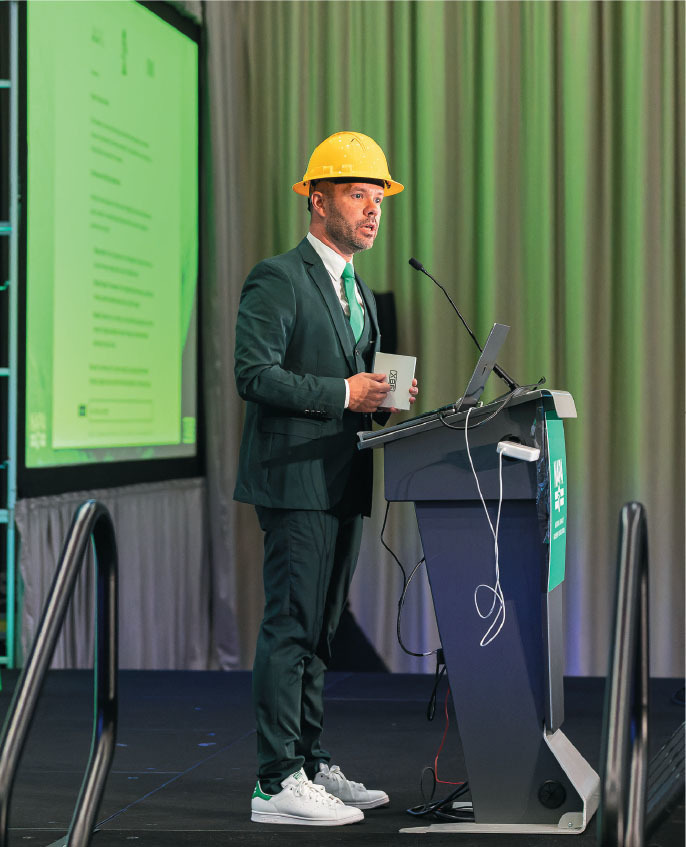Innovations on the Horizon

Paving a greener, smarter, and more sustainable future for our roadways
BY TY JOHNSON, MANAGING EDITOR
NAPA Director of Pavement Engineering & Innovation Jean-Paul Fort works to connect members with the most efficient best practices across the industry, many of which have years-long track records of success.
But beyond encouraging paving under stockpiles and electronic ticketing for trucking, Jean-Paul says there is a litany of innovations on the horizon that could impact the industry, including applications of artificial intelligence.
E-ticketing services have not only made paper tickets obsolete, but also made plants and worksites safer while allowing management to track trucks and optimize deliveries.
“They have done it for trucking,” Jean-Paul said. “Now it has to be from the plant to the roller.”
The problem is simple, Jean-Paul explained: A lack of coordination can lead to segregation. “A plant could be 20 miles from the job and serve three different projects,” he said. “Coordination is difficult because every time you stop production, you introduce segregation and so on.”
Jean-Paul offers an example of a truck arriving at a job site where a paver has been waiting for a couple of hours.
“The operator sees the truck and has a rush of adrenaline and suddenly the rollers cannot keep up; the compaction is not there, and they miss passes. That’s bad coordination on the job,” he said. “That’s where artificial intelligence comes in. Now, data is collected at the plant, so we know how much aggregate goes into the mixer. We know the temperature and the tonnage in the silos. We know each individual truck, where they are located on the road. And the paver can also be tracked with GPS. We know the rollers – we can map the number of passes. With infrared imaging, we can follow the temperature of the mat behind the paver.
These new waves of data mean AI models can take the guesswork out of the project, Jean-Paul said.
“Take trucks delivering to the paver. We have all of this data to inform the paver operator that in the next two hours, they cannot expect more than 150 tons per hour, so it’s useless to rush,” he said. “With information, you can adjust the speed of the paver. If the AI system detects that the rollers are getting too far, or the temperature of the mat is close to the minimum and the rollers are not keeping up, the system will analyze the situation and transfer the information to the paving operator.”
The AI can maintain balance between the plant, pavers, and rollers to ensure there isn’t loss of production or smoothness.
Together, we can pave the way to a greener, smarter, and more sustainable future for our roadways.




